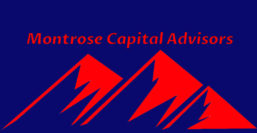In 2017, Trump pulled out of the Paris Accord effective November 2020 (one of only nine nations to do so). He rolled back regulations controlling GHG emissions, particularly methane, and those governing offshore federal leases instituted under Obama a year after Macondo. The industry cheered, as if liberated from an oppressive regime. The response was ill-advised and reflected a short-term view of their strategic environment. Investors, banks, and rating agencies rely on a regulatory regime to reduce risk and assure that prudent operating practices are enforced throughout the industry. Many companies adhere to these standards anyway but when an industry is comprised of so many independent operators, standards must be set, because it only takes a few laggards to impair the entire industry’s reputation.
Stoking the fire further, many voices in the oil and gas industry were vociferously denying the anthropogenic causes of climate change. Capital providers lost confidence they could rely on voluntary adherence to practices that would reduce GHG emissions. In short, the industry and its spokesmen were celebrating a near term “win” to avoid an inexorable adjustment in operating strategy. But what did that matter when the game plan was that Trump would last 4 years and by then companies will have cashed out. Let the next buyer handle it.
The public’s sensitivity to climate change risk had not grown to the point where it was obvious to the industry that political forces would demand action. Yet, as we learned through voluntary disclosures and legal depositions, many producers were aware of the problems of global warming but chose to kick the can down the road. In the meantime, weather patterns were beginning to change, hurricanes and tornadoes were more frequent, and their destructive forces were growing. Floods and wildfires were a regular occurrence, and hundreds of thousands of species became extinct. Scientists predicted these trends would exacerbate unless we tighten restrictions on GHG emissions. In 2016, all signatories of the Paris Accord pledged to take actions to reduce their own carbon emissions to a specific budget. By 2020, it became obvious the collective actions were not compliant. Quite the contrary, GHG emissions were increasing, the climate was getting warmer, the oceans more acidic and a genuine fear arose that we may not be able to turn this problem around.
The TCFD (Task Force for Climate Change Disclosure) sets the disclosure standards for the industry. It encourages the use of scenario analyses to test the sustainability of strategic plans in the face of varied climate risks. These scenarios average a three-year horizon and are meant to identify both physical and transition risks. The most onerous scenario models the impact of substantial disruptions expected to occur when collective action is delayed, causing climate risk to become more immediate and irreversible. In this scenario, public policies become highly restrictive and result in substantially higher physical and transition risks. In short, it follows the adage, “a stitch in time saves nine”- not so difficult to understand after all.
“In the midst of the Depression came the Dust Bowl, one of the most severe environmental crises in US history. The southern Great Plains had once been fertile grasslands, but during the long colonization of the West, farmers started deep-plowing the ground, spurred on by successive governments that offered settlers plots of land and encouraged ever more productivity and efficiency. Farmers plowed over the topsoil so frequently and fervently that they ended up displacing the region’s native grasses forever. There was nothing to hold the ground together anymore, so when droughts came and strong winds followed, enormous “black blizzards” of dust spread across parts of Kansas, Colorado, Oklahoma, Texas, and New Mexico. Thousands of families had to flee their homes.”1
“The caption of a photograph that (Dorothea)Lange took in Bakersfield, California, of a sharecropper family with their kids and belongings in tow reads, “We got blowed out in Oklahoma.” 2
John Steinbeck captured this disaster in literature, Dorothea Lange did the same with her photographs. The causes of the “Dust Bowl” were not foreseen until the calamity struck. We will not have the solace of ignorance should we avoid the collective action needed to prevent the existential risk of global warming.
#ESG #ClimateChange #Sustainability #TCFD
- “Things as They Are”-Valeria Luiselli (NYRB’s, Nov 19, 2020 issue)- A review of a Dorothea Lange exhibition at MOMA-NY.
- Ibid.
